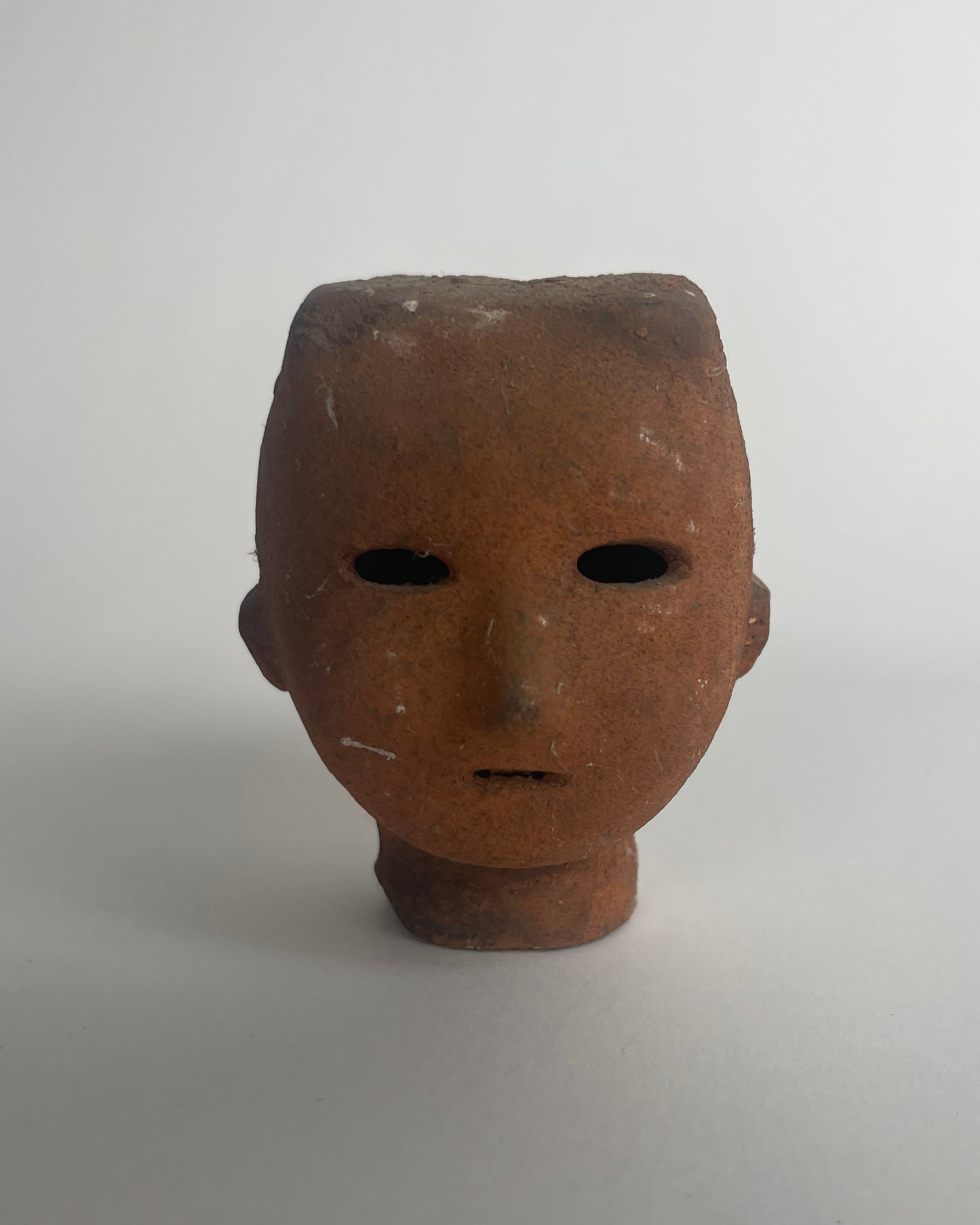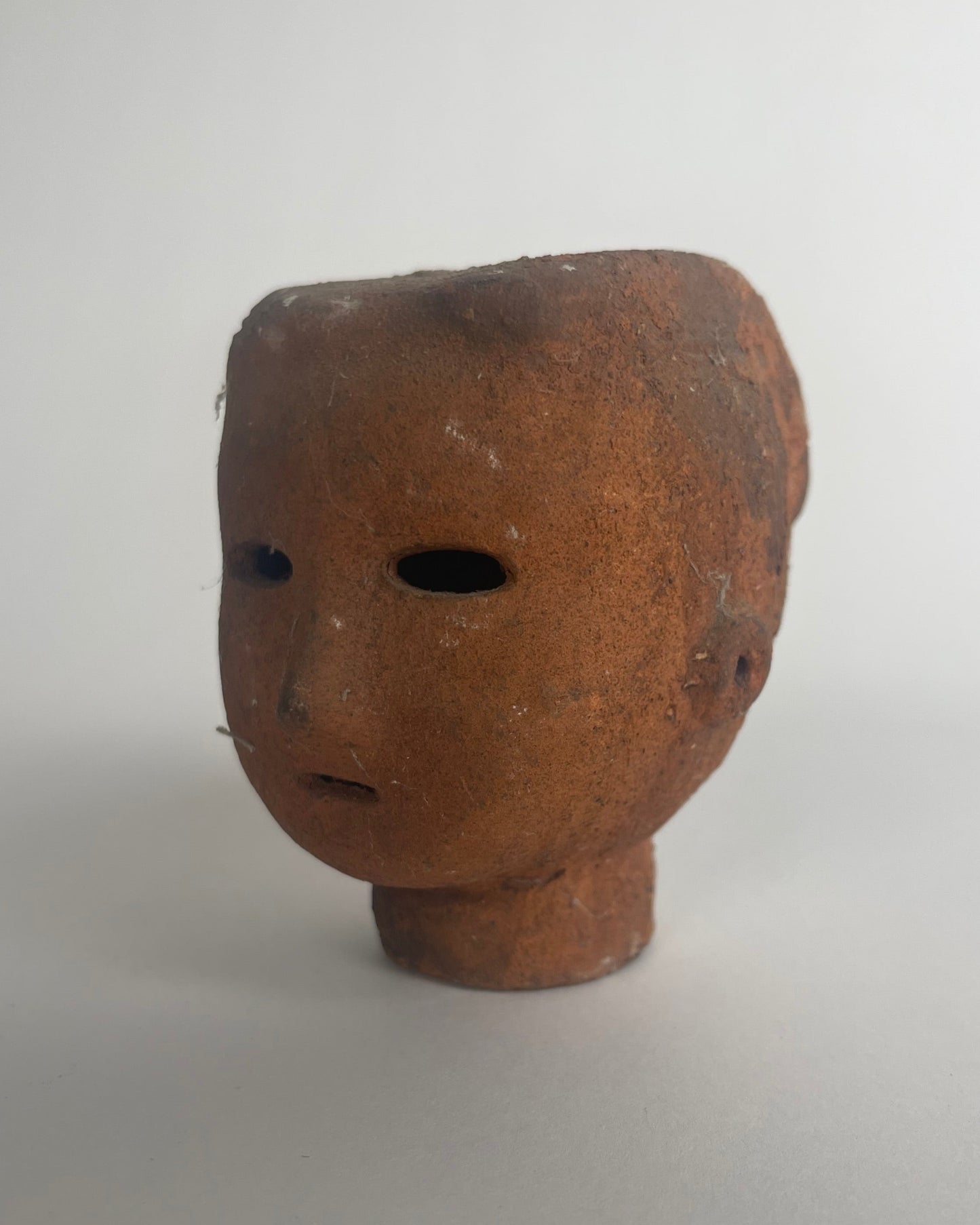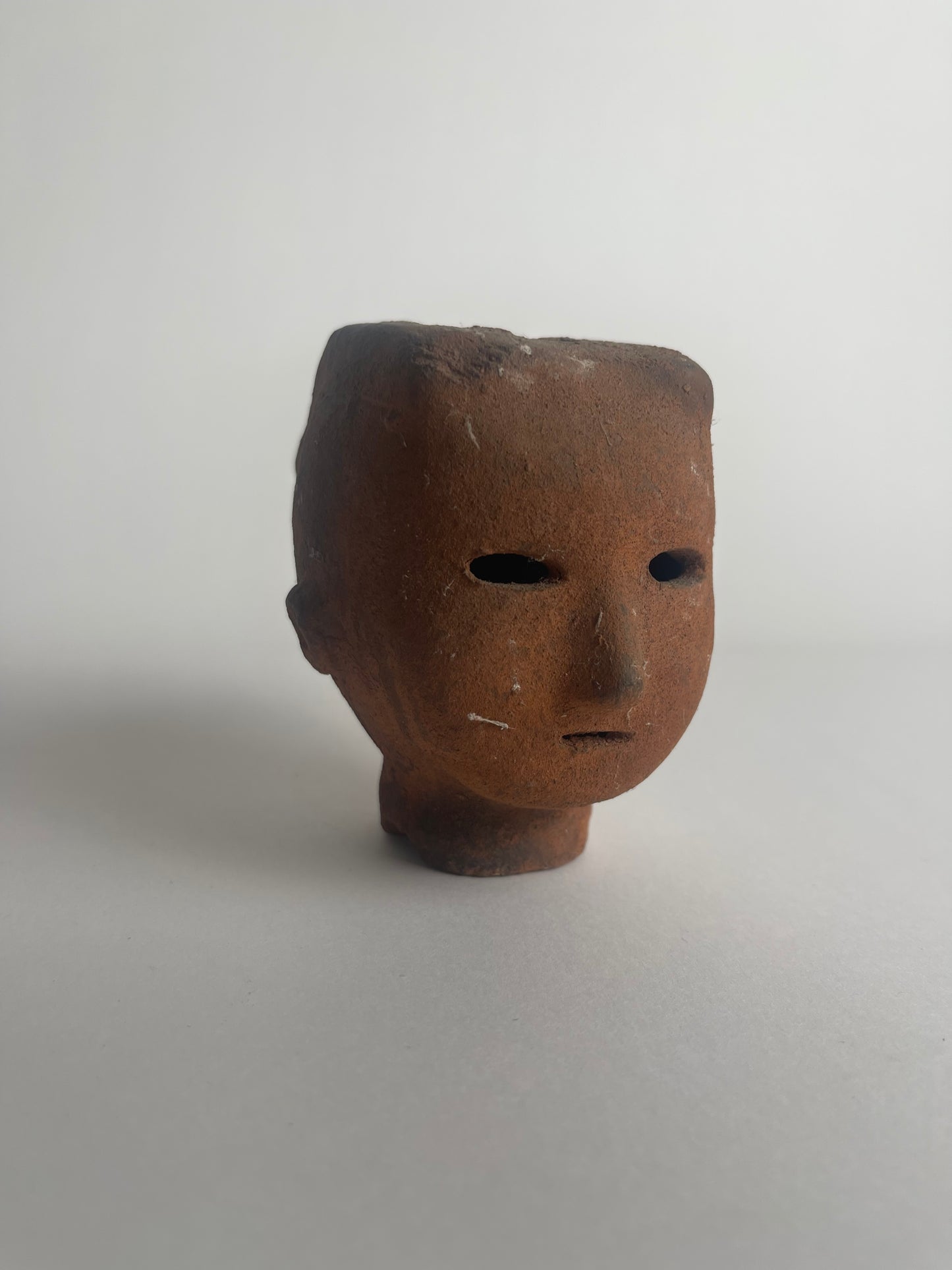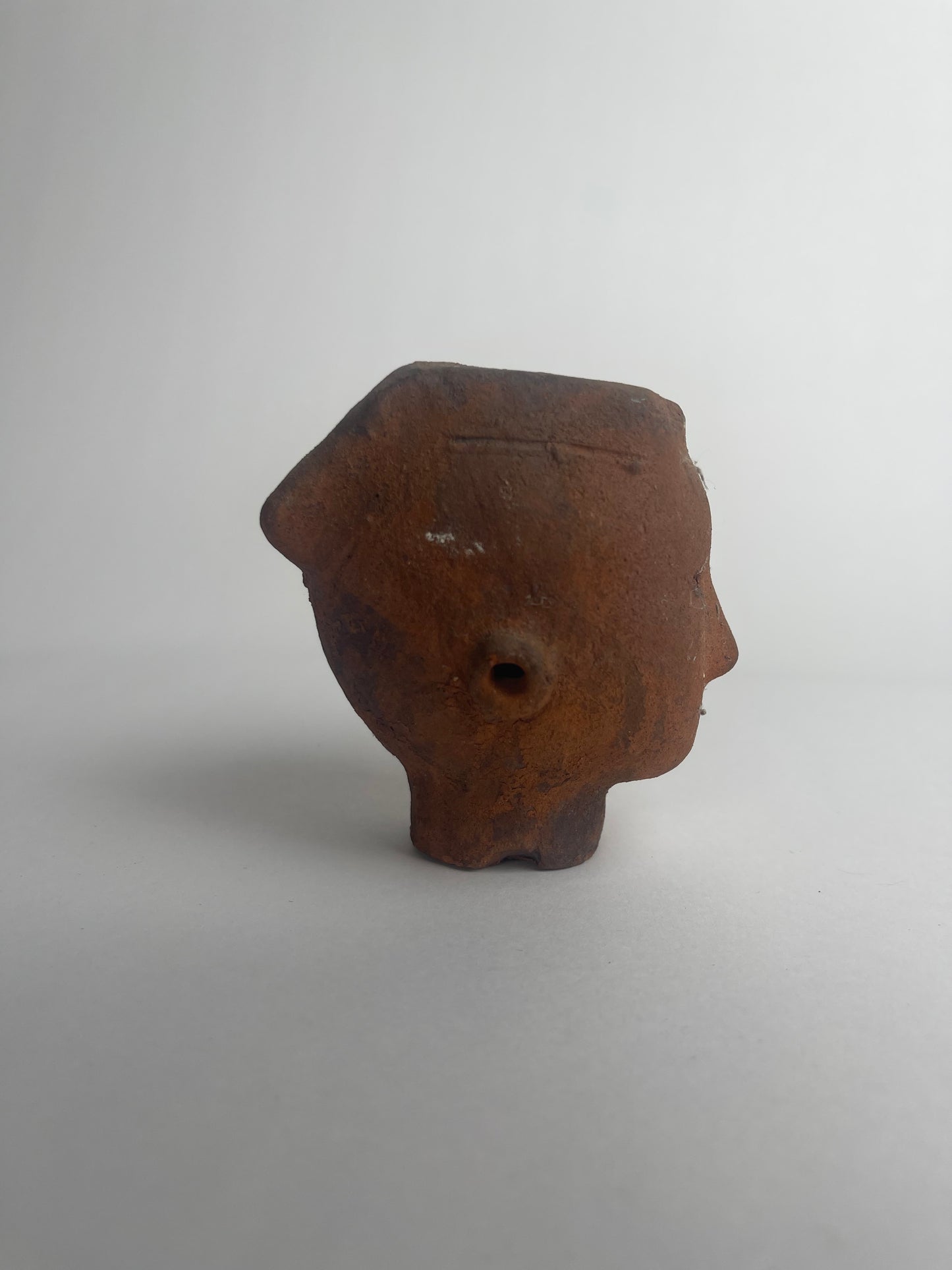Haniwa Head
Haniwa Head
For questions email hello@curiocollect.com
Japan
Kofun Period 3rd–6th century
This Haniwa head, dating to the Kofun period of Japan (circa 3rd–6th century CE), is a haunting and evocative remnant of ancient funerary practice. Haniwa (literally "clay ring") were hollow, unglazed terracotta figures placed on burial mounds, originally as simple cylinders and later as elaborate representations of humans, animals, houses, and tools.
This particular fragment—a ceramic head—would have once belonged to a full human figure. The expression is serene and abstract, with almond-shaped eyes, a slit mouth, and subtle incised details. The stylization reflects not a portrait but a symbolic ideal—possibly a warrior, shaman, or court figure, meant to guard, honor, or accompany the deceased.
Formed from coarse, low-fired clay, the surface is unglazed, often showing traces of hand-molding and firing marks. Though fragmentary, the head retains a powerful presence, evoking both stillness and spiritual watchfulness.
Condition: Nice condition
3.0 in. length
2.5 in. width
3.25 in. height
Couldn't load pickup availability
Share













